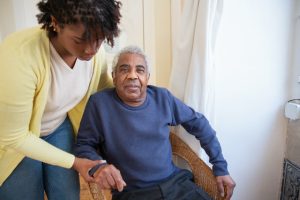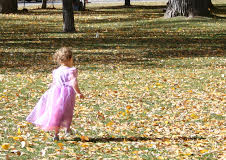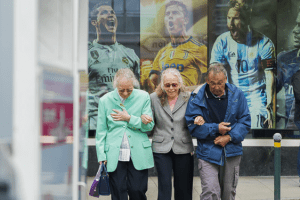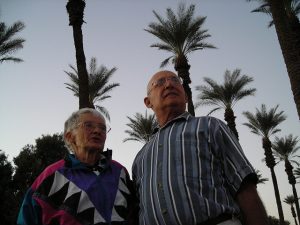Guest Blog: Caring for a Parent with Dementia at Home
Dementia is a progressive illness that causes a decline in mental abilities. Symptoms can include memory loss, confusion, difficulty speaking or understanding, and changes in mood or behavior.
One of the most important things to remember is that your parents are still the same person they have always been, even if their condition is changing. Be sure to talk with them, spend time with them, and continue to involve them in activities they enjoy.
Caring for a parent with dementia can be difficult. With proper planning and support, it is possible to provide them with the care they need. By following these tips, you can make life easier for both of you.
Tips to Help my Elderly Parent with Dementia
There are many things you can do to make caring for a parent with dementia at home easier. Here are some tips:
- Make a daily routine and stick to it as much as possible. It will help your parents feel more secure and avoid feeling overwhelmed.
- Another thing you can do to keep your parents safe is to ensure that their living environment is as safe as possible. Remove or keep any tripping hazard out of reach like cords and wires, and install safety rails in the bathroom.
- Create a comfortable, safe environment where your parents can relax and feel at ease. Remove loose carpets or rugs that could cause falls.
- Ensure that your parents are eating healthy foods and drinking enough fluids. Proper nutrition is essential for keeping your parents healthy.
- Encourage your parents to get regular exercise, even if it is just a short walk around the block. Exercise can help improve mood and cognitive function.
- Make sure your parents get plenty of sleep. Quality sleep is essential for overall health and well-being.
- Regularly communicate with your parent’s doctor to ensure they have the best possible care.
Helpful Tools for Caring After Demented Parents
If you find it difficult to care for your parents on your own, many helpful resources are available. Local support groups can offer advice and emotional support, and home health care providers can provide additional assistance with tasks such as bathing, grooming, and medication management.
One of the most common symptoms of dementia is wandering. This can be dangerous for your parents and others, so it’s important to take steps to prevent them from wandering. One way to do this is to keep a close eye on them and ensure that they are always in a safe place. If they do wander off, make sure to have a plan in place to find them quickly. MedicAlert bracelets or ID tags can help emergency personnel identify your parents quickly if they are found wandering.
One important resource to consider is MedicAlert Safe Return, a program that provides identification and emergency notification services for people with dementia or other cognitive conditions. If your parent wanders away from home, caregivers can use the 24/7 hotline to locate them quickly and ensure they receive the necessary medical attention.
How to Cope with a Parent with Dementia
The experience of caring for a parent with dementia can be difficult and emotionally taxing. If you feel overwhelmed, don’t be afraid to ask for help from friends or family members. There is no shame in admitting that you need help. Here are some tips for coping:
Seek out support from friends and family members. Talking about your experiences can help you feel more understood and supported.
Join a support group or online forum specifically for caregivers of people with dementia. This can be a great way to connect with others who understand what you are going through.
Look into respite care, which can provide temporary relief from caregiving duties. This can allow you to take a break and recharge while knowing that your parents are in good hands.
Talk to a therapist or counselor about the emotions you are experiencing. This can help you deal with the stress and sadness of this situation.
Navigating Role Changes in the Grandparented Family
Needs of the child
An essential consideration in assigning terms of endearment is what is ultimately in the best interest of your child. I asked myself which was more important – that JJ have us as grandparents? or that he have a forever Mom and Dad? In our case, this was a simpler choice because JJ had plenty of other grandparents, Saunties, and Bruncles, but only one set of reliable parents who were part of his life. While we kept his original birth certificate, the county issued a new one that named us as his parents as if he had been born to us. One of our other adopted children suggested when JJ goes to school, it is more important that he and everyone else knows who his Mom and Dad are. Seemingly simple choices now can become of great importance later in his life.
Involvement of the birth parents
There are many situations in which grandparents care for their grandchildren, even formally adopting them, but the natural parents are still part of the child’s life. In cases like these, it is probably best to keep everyone’s titles the same in order to have less confusion for the child. However, if the birth parents are incarcerated, deceased, have ongoing substance abuse problems, have moved far away, do not ever see the child, or pose a danger or threat to the family, consider what is in the child’s best interest.
Wishes of the child or children
One Grandmother recently told me that when they adopted her grandson at a young age, her husband wanted to continue to be called Grandpa. However, as soon as their boy started to talk, he began to call Grandpa his Daddy, and soon after, Grandpa gave up and embraced his role as Dad along with the new name. What do your children want to call you? What do you want to be called? If they name you Mom or Dad, it is usually because this is how they see you. It is a term of great endearment that fills a need in their life. Names are important because they express relationships to us and others. Strongly weigh what your children prefer to call you and negotiate mutually respectful names for your unique family ties.
Wishes of the relatives
While other relatives cannot determine what your adopted grandchild will call you, relatives will also have some concerns about their changing relationships within this unique family system. Ask relatives what they would like to be called. Grandparents who continue to be part of your child’s life may have unique or cultural names that they prefer to be called so that the child recognizes them as special. Honor those wishes as much as you can. Even small choices as these can strengthen the family ties and provide your little one with the security he deserves.
So, in the land of Saunties and Bruncles there are many unfamiliar twists and turns. The list of difficult choices and tunnels off the rabbit hole on this strange journey will continue on. But, as you take one step at a time, you can successfully navigate your changing role in this new, wonderful family.
Guest Blog: 5 Effective Arthritis Self-Management Tips for Seniors
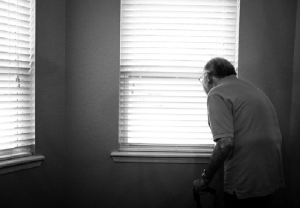
As a term, arthritis refers to over 100 different diseases that cause pain, swelling and limited mobility or flexibility in joints as well as other areas of the musculoskeletal system. It is an ailment that impacts 54 million adults today, a number that is only set to grow due to increased life expectancies and improved medical capabilities, potentially even rising to 78 million by 2040. Many people, in particular older adults or family caregivers may assume that arthritis is a normal part of aging that affects everyone at some point, therefore reporting symptoms can sometimes be missed or delayed. However, there are many different ways to treat arthritis that can help improve quality of life. By doing this early, effective arthritis pain management in seniors, in particular aspects such as elderly knee pain treatments can be administered early and have a much greater impact on the spread of the problem. So what is the most common type of arthritis in the elderly and what helps arthritis pain in the elderly are important questions to ask. Osteoarthritis is one the most common forms of arthritis as comes about as a result of the breakdown of joint cartilage from continued wear and tear. It can occur in any joint, but will typically affect the hands and weight-bearing joints like knees, hips and spinal joints. If proper management of chronic arthritis pain in the elderly is not sorted early, these can worsen over time and make it incredibly difficult to complete even the simplest of tasks. Arthritis pain management in seniors will often include mild to severe symptoms including: ● Aching ● Painful and stiff joints ● Swelling ● Lack of flexibility and mobility in joints The key to successful arthritis pain management in seniors first involves an early diagnosis and the incorporation of effective practices to lessen the impact of the symptoms. Within this there are several effective ways that management of chronic arthritis pain in the elderly can be done simply and easily. Here are 5 simple tips that can help anyone suffering from arthritis: Promote Regular Movement and Activity Physical activity and regular exercise is a simple, effective, way to relieve arthritis pain in seniors. Being physically active can help to reduce pain, improve joint functionality, and stave off the symptoms of osteoarthritis. Look for exercise and arthritis self-management programs that have been specifically designed with seniors in mind which are led by trained experts to help those suffering with arthritis. Even small amounts of movement throughout the day can make a significant difference and can be done from the comfort of your own home to help strengthen your muscles and joints with low impact exercises. Encourage Weight Loss This goes hand in hand with regular movement and activity, but it is always good to encourage those suffering with arthritis to manage their weight and diet effectively. This is because excess weight will cause additional strain on weight-bearing joints, the hips and knees, which are likely areas to be affected by osteoarthritis. Reducing body weight, even by as little as 10% or just 10 to 12 pounds can actually reduce pain and improve joint function for seniors living with arthritis. Talk to experts in arthritis exercises and your doctor about ways that you take better control of your weight, and, by proxy, your arthritis. Medication Assistance If the person in question is elderly, it is likely that they will be using some forms of medication and treatment to help with arthritis symptoms. Arthritis is often treatable with medication and treatment plans are available, however there are some ways to make this more accessible and simpler for someone living with arthritis. These methods include: ● Ask the pharmacist to provide upside-down caps on bottles to make them easier to open. ● Use a pill popper device for over-the-counter medications ● Look into a prepackaged medication management systems that are easier to open ● Consult with doctors, pharmacists and caregivers to devise assisted methods that make taking pain medication simpler for those with joint issues Make Daily Tasks Easier There are many arthritis-friendly products that can make life easier for seniors living with the affliction. This can be anything from having foam handles on products and arthritis-friendly utensils to make everyday tasks a simpler prospect while also reducing fatigue. This can also be applied to larger products such as installing grab bars in a shower, bathtub and around a toilet to make washing and hygienic tasks much easier and safer. Toilet seat risers can help reduce the effort needed to sit down and stand up while automatic dispensers reduce the need to squeeze bottles, an act difficult for those whose finger joints have less mobility. Stay Positive It may seem easier to say than to do, but staying positive is a key part of everyday life for those living with arthritis. Especially in seniors, the symptoms can lead to negative feelings so family members and caregivers should help them remain positive and focused on what they can still do. A positive mental outlook can have a big impact on how you feel as well as how physically able you feel. Spend time with those you love, take up hobbies that you can do even with arthritis and focus on your abilities, rather than your disabilities and pain management becomes a much easier proposition. Final Thoughts Easy, effective, and efficient arthritis pain management in seniors will help to improve the quality of everyday life for elderly people. There are more ways to help with this growing problem, from customized movement plans to improved medical assistance, so it’s important to find the right approach depending on the person in question. Consult with doctors, caregivers, and physical therapists to ensure your self-management plan can be done in a safe and healthy manner. Author Bio: Kelly Tassos is a creative content writer for MyArthritisRx, a patient-facing digital platform to facilitate self-management of Osteoarthritis. She specializes in helping people understand and receive treatment for inflammatory diseases like arthritis as well as other trending health topics.
|
Guest Blog: Spotting the Signs of Substance Abuse in the Elderly
Those who are at the twilight of their lives are vulnerable not just to illnesses but also to addiction, as well. This is especially true for the elderly who are residents of various healthcare facilities as the prevalence rate of alcohol abuse disorder jumps up to 22%.
Sadly, most symptoms of substance abuse are misinterpreted for depression, natural signs of aging, and other unrelated causes.
Here are just some of the warning signs that would tell you to get some help:
1. Lack of hygiene – People with substance abuse problems hardly care about their hygiene as the priority is when they can have their next fix.
2. Slurred speech – This is quite obvious and when you see them slurring their speech every time you check up on them, chances are they have an alcohol problem.
3. Extreme mood swings – The addicted individual becomes emotionally unstable. They can lash out at you for no reason at all.
4. Hyperactivity – Stimulants like meth and cocaine trigger hyperactivity.
5. Lethargy and excessive sleeping – Prescription opioids are the most commonly abused drugs by the elderly. Abusing their medications can take a toll because of their slowed metabolism.
6. Sudden weight loss – Addicted individuals are not really eating right because, again, their priority is sustaining their addiction. Instead of buying food, they buy drugs instead.
7. Alienation – They will isolate themselves from everybody else because they don’t want to be answering questions about their physical appearance and behavior.
8. Constant lying – When they do get confronted, they lie and lie. They will also feign illnesses in order to trick their doctors into adding into their dosage of prescription opioids.
9. Frequent accidents – Their motor skills will depreciate as they grow older and that’s understandable. However, when they fall more times than usual, it could be a sign that they have an alcohol abuse disorder.
10. Mental health issues – Over time, abusing drugs and alcohol will mess up with the chemistry in their brains. They may develop depression, feeling of isolation, extreme anxiety, among others.
Senior living facilities are not equipped to deal with substance abuse. However, they do have protocols on how to deal with these situations. However, if your parents and grandparents are living on their own and you think they need help, you can search for the rehab facilities in Colorado.
Do You Need a Medical Alert System?
Medical alert systems can provide an added layer of protection that can help you lead an independent life. No matter your age, falling or being caught in a situation where you’re unable to summon medical help in the case of an emergency can be a very real concern. Though medical alert systems are closely associated with senior citizens, they’re a great asset that can offer assistance for a variety of ages and medical conditions.
It’s important to note that medical alert systems are not the same thing as medical ID jewelry. Medical ID jewelry may come in the form of a bracelet or necklace engraved with personal information that identifies medical conditions first responders need to know in order to attend you. These are commonly used for responders to know if a patient has specific drug and food allergies, prescribed medicines, emergency contacts or conditions that could impair judgment such as Alzheimer’s. A medical ID should have the medical emblem also known as the Star of Life that contains the snake and staff symbol.
Medical alert systems, on the other hand, are small electronic devices that allow you to connect with a dispatcher who can seek emergency help or contact a designated family member or friend to come to your aid should you need medical assistance.
Most of these devices can be worn as aw or necklace and function by utilizing wireless voice, data, and geographic location technology to allow for accurate location-tracking and real-time monitoring.
This is ideal for anyone from an unaccompanied minor walking to the bus, a senior living alone that would like more autonomy, or a person that would feel safer walking home late from work.
If you’re considering medical alert devices, there are a variety of features and service options to choose from, including:
• Environmental monitoring: Some medical alert systems have integrated carbon monoxide monitoring that contain sensors that measure concentration of gas in the environment.
• Mobile caregiver tools: Some medical alert systems offer real-time monitoring apps for caregivers to view on their mobile devices. These features will notify caregivers should there be any unusual patterns, periods of inactivity, or low battery life on the user’s medical alert device.
• GPS location services: The GPS accuracy level for certain medical alert systems may suffer interference if used inside a multilevel building. It’s recommended that you let your medical alert company know the layout of the building where the user is residing so that when help is summoned, it arrives at the right place.
• Language support: Medical alert systems are becoming popular, and many companies now offer real-time translators that are able to communicate in up to 180 languages. If you need assistance in another language other than English, ask an agent if they offer translation services before purchasing the device.
• Fall Detection: Some alert systems come with fall detection technology that constantly monitor the speed and direction of the user’s movements. If it detects an unusual movement, such as a fall, the device will alert the monitoring center after a specific period of inactivity.
• Waterproof: Most slips and falls can happen when you’re in the shower. Luckily, the majority of medical alert devices are waterproof to help ensure your safety at all times.
A quality medical alert system will provide you the peace of mind to go about your life feeling secure and independent. To learn more details regarding the equipment, contract, price, reputation and certifications for the best medical alert systems nationwide please read this in-depth study at ConsumersAdvocate.org. At the end of the day, this is a good investment for your health and wellbeing.
Guest Blog: Home Improvements and Modifications for Aging in Place
January 5, 2021 by Julia Weaver
Now more than ever before, we’re seeing more adults choosing to live at home as they grow in years, or what is known as aging in place. Living at home helps aging adults maintain their lifestyle for as long as possible, rather than moving into a nursing home or assisted care center. In fact, three-quarters of adults 50 years and older would prefer to remain in their homes as they age, according to a survey by AARP. Though many of us won’t be able to live independently forever, home modifications will allow your loved ones to continue to live in their home longer by creating a more manageable environment. Whether they’re living in a single-story condo in Dallas, TX or a three-story home in Portland, OR, there are modifications that can be made to every home to help make daily tasks a little easier.
Helpful home modifications
As we grow older our bodies and capabilities change, and not all homes are designed to support this challenge we’ll face. A lot of times doorways are too narrow, bathrooms too small, floors too slippery, and kitchen cabinets too high to reach. For aging adults, a home designed for optimal accessibility, convenience, and safety is imperative to avoid falls or serious injuries.
Optimizing a home for safe and comfortable living while creating a home environment that makes getting around easier is essential for aging in place. That’s why we’ve gathered the most common home modifications, from simple adjustments to larger remodeling projects.
General Home modifications to aid in mobility
- Install handrails. For aging in place, add handrails to stairs, hallways, bedrooms, and bathrooms for extra balance.
- Upgrade the lighting. Replace existing bulbs with LED bulbs to increase visibility. Consider installing touch-activated lamps, and placing night lights in the bedroom, bathroom, and hallways.
- Install lever door handles. Switch out standard round doorknobs for lever-style handles. These do not require the same level of grip.
- Install a stairlift. This is a great alternative when walking up stairs becomes more difficult. Install light switches at the top and bottom of the stairs to prevent your loved one from using the stairs in the dark.
- Install automated blinds. This style of window treatment allows aging adults to adjust their blinds without having to stand up.
- Create an open floor plan. Make wide passageways throughout the home with little obstruction. Widen doorways and hallways if your loved one uses a walker or wheelchair to navigate their home.
- Replace hardwood, tile, laminate, or vinyl flooring for carpet. If your loved one doesn’t use a wheelchair, carpet will be most forgiving and provides more floor consistency.
For the living room
- Rearrange furniture and remove clutter. To avoid tripping hazards, be sure furniture placement leaves plenty of space to move about the room safely.
- Install anti-slip mats. Add strips to the bottom of rugs to increase traction and reduce the chances of tripping.
- Replace unsteady furniture. Discard furniture that wobbles to prevent falls, and add plastic bumpers to the sharp edges on furniture pieces.
For the kitchen
- Keep daily-use items accessible. Store small appliances, cookware, and tableware between waist and shoulder height to avoid the need to crouch down or use a step stool.
- Consider purchasing a stovetop with an automatic shut-off feature. Once the sensors fail to detect motion for an extended period of time, the stove will shut off.
- Install a hands-free faucet and anti-scald device. Easily turn the water on and off with the wave of a hand, and install an anti-scald device to avoid the possibility of burns.
- Replace kitchen cabinets and adjust counter and sink height. For more convenient storage space, install drawers, open shelving, or pull out shelves. Choose a counter height where it’s easy to prepare meals and wash dishes while sitting.
- Adjust the location of major appliances. Place the oven, sink, and refrigerator as close to each other as possible.
For the bathroom
- Add adhesive strips to a bath mat in showers and tubs. This can help prevent slipping on wet surfaces.
- Install non-skid strips in case the flooring becomes slippery. Try to avoid ceramic tile as this can become slick when it’s wet.
- Install a walk-in bathtub or a shower transfer bench. This can greatly reduce the chances of slipping and falling. Climbing in and out of a traditional bathtub or standing for an extended period of time may become more difficult.
- Install grab bars or rails in bathtubs and near the toilet. This will improve mobility and help to prevent falls.
- Install a raised toilet seat. An elevated toilet seat decreases the distance between standing and sitting.
For the home’s exterior
- Create at least one no-step entry into the home. Replace exterior stairs with a removable ramp for a smooth transition into and out of the home.
- Add exterior lighting and landscape lighting. To avoid falling or tripping, add outdoor lighting to walkways and stairs.
- Install handrails. Add handrails on both sides of walkways for extra support and balance.
- Choose low maintenance materials. Opt for vinyl siding, metal roofing, composite decking, and low maintenance landscaping.
- Install a security system. A home security system can give your loved one a sense of security and protection.
How to pay for home modifications
While in the end, it’s generally less expensive to age in place as opposed to living in a senior living community, the upfront costs for a remodel can add up. Luckily there are resources and programs available, such as home improvement grants, equipment loans, and low-interest loans.
You should also consider researching programs like Medicare Advantage, Non-Medicaid Government assistance and Medicaid HCBS Waivers, Veterans programs, and non-profit organizations for financial help. As you’re crunching the numbers, it’s important to remember that the cost associated with home modifications has two components: the labor cost and the materials cost. Oftentimes, the cost of labor for installing the equipment will not be covered by insurance.
Create a support system with senior care and services
Forming a support system for your loved one is a big part of aging in place. Besides the support from family members, it’s a good idea to consider senior care and services for your aging parent. There is a network of services available, including meal delivery, nurses, transportation, and house cleaning services.
In-home care services are also offered at various levels depending on the situation. On days when you’re unavailable, an elder companion could spend time with your loved one to prevent social isolation. In-home caregivers can provide help with day-to-day activities like cooking, grooming, or shopping, while also making sure your loved one is safe in their home
Introduce technology into your loved one’s home
Assistive technology solutions, smart home features, and tech gadgets can be used to help simplify everyday tasks, promote independence, and stay safe while aging in place. There are all sorts of devices, like medical alert devices to signal for help, assistive seating devices to lift your loved one into the standing position, and smart bulbs that can be controlled remotely.
Individual results may vary.
This is not intended as a substitute for the services of a licensed and bonded home services professional.
Redfin does not provide medical advice.
All of the material provided on Redfin’s blog, such as text, treatments, dosages, outcomes, charts, patient profiles, graphics, photographs, images, advice, messages, forum postings, and any other material provided on Redfin’s blog are for informational purposes only and are not a substitute for professional medical advice or treatment. Always seek the advice of your physician or other qualified health provider with any questions you may have regarding your health. Never disregard professional medical advice or delay in seeking it because of something you have read on Redfin’s blog.
If you think you may have a medical emergency, call your doctor or 911 immediately. Redfin does not recommend or endorse any specific tests, physicians, products, procedures, opinions, or other information that may be mentioned on Redfin’s blog. Reliance on any information provided by Redfin’s blog, by persons appearing on Redfin’s blog at the invitation of Redfin’s blog, or by other members is solely at your own risk.

